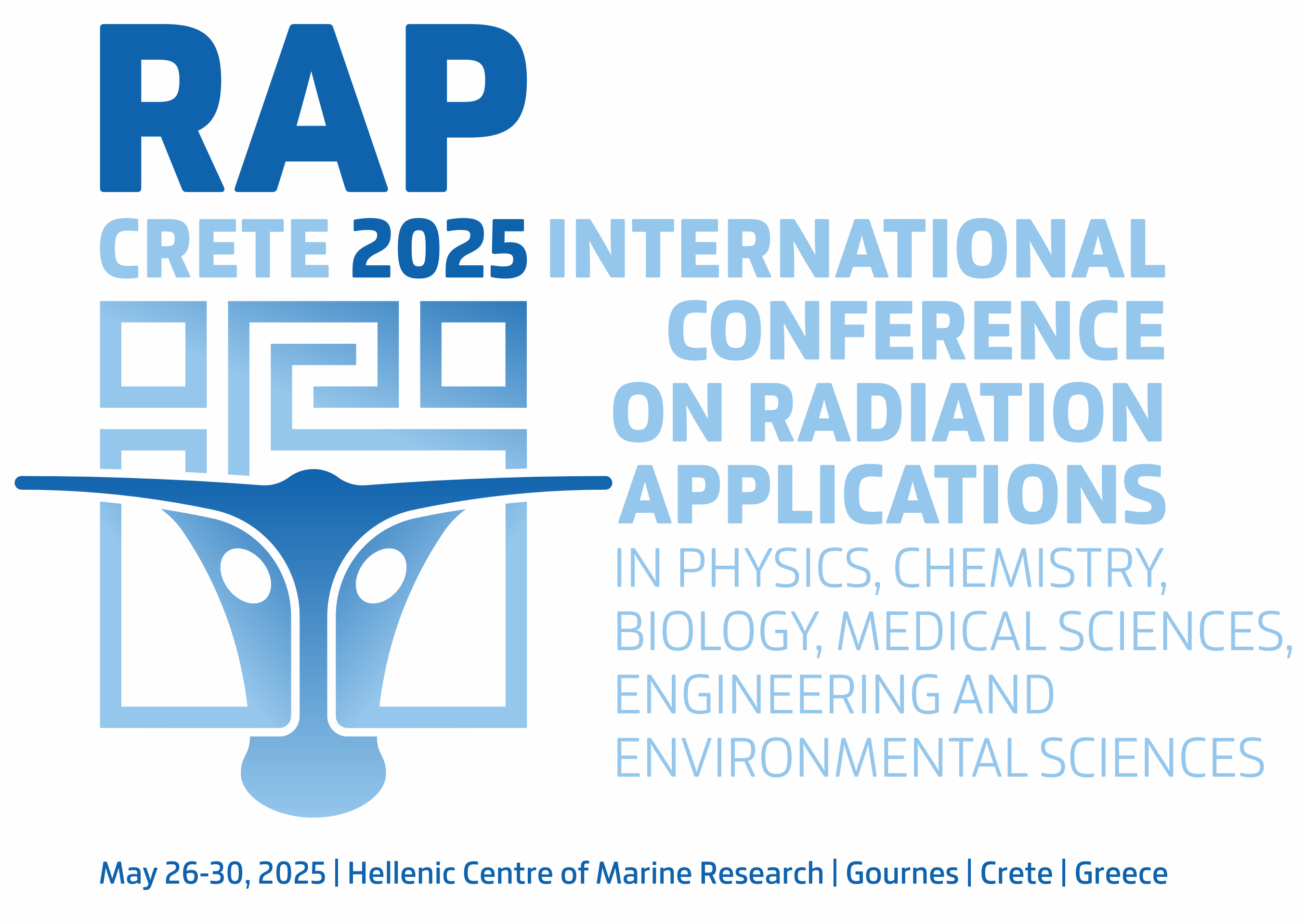Vol. 4, 2019
Radiation Detectors
CADMIUM ZINC TELLURIDE SOLID-STATE DETECTOR CHARACTERISATION FOR ITS USE AS A SPECTRO-DOSEMETER
Nikola Kržanović, Annette Röttger, Viacheslav Morosh, Maksym Luchkov, Stefan Neumaier
Pages: 148–151
DOI: 10.37392/RapProc.2019.30
Abstract | References | Full Text (PDF)
Concerning ionising radiation monitoring in the environment in areas which, by normal means, are inaccessible, e.g. in contaminated areas after a nuclear or radiological incident, the use of highly mobile systems, comprising of unmanned airborne vehicles equipped with ionising radiation detector, is advised in order to protect the health and the life of first responders. As a promising candidate, the compact solid-state spectrometer based on CdZnTe is characterised by performing irradiations in the reference radionuclide radiation fields of PTB. The energy-dependent conversion coefficients are derived from recorded pulse-height spectra, and they enable calculation of the operational radiation protection quantity, ambient dose equivalent rate, directly from the spectrum without deconvolution. The validity of the conversion coefficients was evaluated by determining the deviation of the calculated dose rate from the reference ambient dose equivalent rate for the 226Ra radionuclide, available at the Underground Dosimetry Laboratory (UDO II) of PTB. By employing the derived conversion coefficients, the detector “linearity” (dose rate dependence of the response) was checked in the 137Cs reference fields of different ambient dose equivalent rates ranging from 25 nSv/h up to 1 μSv/h. The deviation of the calculated 226Ra dose rate from the achieved reference value was +2%.
- S. Neumaier, H. Dombrowski, “EURADOS intercomparisons and the harmonisation of environmental radiation monitoring,” Radiat. Prot. Dosim, vol. 160, no. 4, pp. 297 – 305, Aug. 2014.
DOI: 10.1093/rpd/ncu002
PMid: 24497552 - Radiological maps, Real-time monitoring, European Commission Joint Research Centre (EC JRC), Brussels, Belgium.
Retrieved from: https://remap.jrc.ec.europa.eu/
Retrieved on: Jul. 12, 2019. - N. Kržanović, K. Stanković, M. Živanović, M. Đaletić, O. Ciraj-Bjelac, “Development and testing of a low cost radiation protection instrument based on an energy compensated Geiger-Müller tube,” Radiat. Phys. Chem., vol. 164, Nov. 2019.
DOI: 10.1016/j.radphyschem.2019.108358 - GR1 CZT gamma-ray detector spectrometer, Kromek Group plc, Zelienople (PA), USA.
Retrieved from: https://www.kromek.com/product/gamma-ray-detector-spectrometers-czt-based-gr-range/
Retrieved on: Jul. 10, 2019. - C. Szeles, “CdZnTe and CdTe materials for X‐ray and gamma ray radiation detector applications,” Phys. Status Solidi, vol. 241, no. 3, pp. 783 – 790, Mar. 2004.
DOI: 10.1002/pssb.200304296 - M. M. Be et al., Table of Radionuclides (Vol. 8 – A = 41-198), BIPM, Paris, France, 2016.
Retrieved from: https://www.bipm.org/utils/common/pdf/monographieRI/Monographie_BIPM-5_Tables_Vol8.pdf
Retrieved on: Jun. 15, 2019 - H. Dombrowski, “Area dose rate values derived from NaI or LaBr3 spectra,” Radiat. Prot. Dosim., vol. 160, no. 4, pp. 269 – 276, Aug. 2014.
DOI: 10.1093/rpd/nct349
PMid: 24478307 - P. Kessler, B. Behnke, H. Dombrowski, S. Neumaier, “Characterization of detector-systems based on CeBr3, LaBr3, SrI2 and CdZnTe for the use as dosemeters,” Radiat. Phys. Chem., vol. 140, pp. 309 – 313, Nov. 2017.
DOI: 10.1016/j.radphyschem.2016.12.015 - P. Kessler et al., “Novel spectrometers for environmental dose rate monitoring,” J. Environ. Radioact., vol. 187, pp. 115 – 121, Jul. 2018.
DOI: 10.1016/j.jenvrad.2018.01.020
PMid: 29455914 - A. Röttger, P. Kessler, “Uncertainties and characteristic limits of counting and spectrometric dosimetry systems,” J. Environ. Radioact., vol. 205 – 206, pp. 48 – 54, Sep. 2019.
DOI: 10.1016/j.jenvrad.2019.04.012 PMid: 31102905


